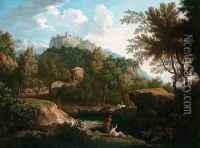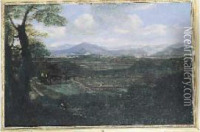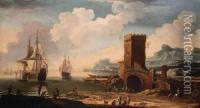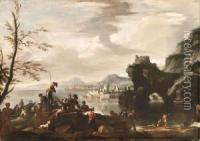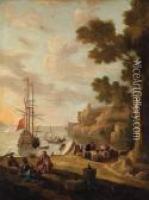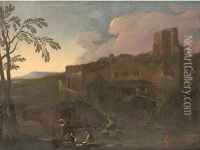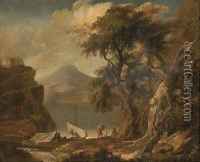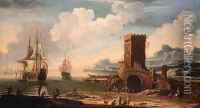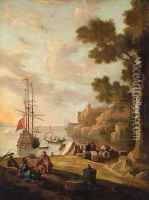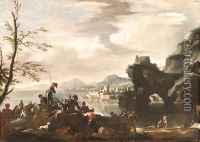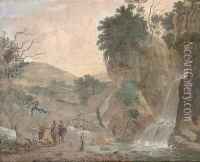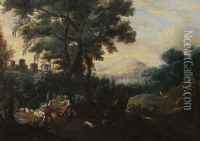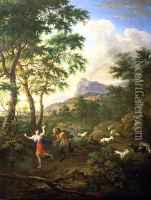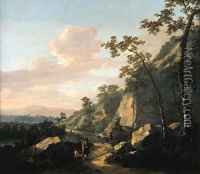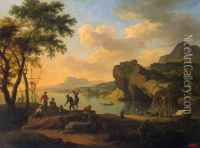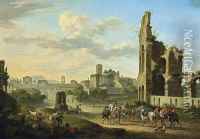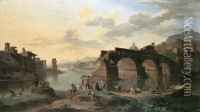Jacob De Heusch Paintings
Jacob De Heusch was a Dutch painter who was born in 1657 in Utrecht, Netherlands. He was the nephew and pupil of the famous landscape painter Willem de Heusch. Jacob is known for his Italianate landscapes, which show the influence of his uncle and other Dutch Italianate painters of the 17th century, such as Jan Both and Jan Baptist Weenix.
Jacob's works often depict classical ruins and pastoral scenes with figures, typically bathed in a warm, golden light. His compositions are marked by a skillful use of perspective and a keen observation of naturalistic detail. He was particularly adept at rendering atmospheric effects, such as the play of sunlight through trees and the soft gradations of the sky at different times of day.
In 1680, De Heusch moved to Rome, where he became a member of the Bentvueghels, a society of mostly Dutch and Flemish artists working in Rome. It was a common practice among the members of this group to adopt a nickname, known as a 'bent name', and De Heusch was given the name 'Giacomo le Zoccolaro', which reflects his status as a foreign artist in Italy.
During his stay in Rome, De Heusch's style developed further as he continued to assimilate Italian influences. His landscapes became more expansive and incorporated elements from the Roman Campagna, the coastal areas, and the surrounding countryside. These scenes were popular with Grand Tourists, who sought souvenirs of their travels, and with collectors back in the Dutch Republic.
Jacob De Heusch returned to Utrecht around 1697, where he continued to work until his death in 1701. His works can be found in various museums and collections around the world, and they remain a testament to the enduring appeal of the Dutch Italianate style in landscape painting. Despite his relatively short life and career, De Heusch left behind a body of work that is appreciated for its technical mastery and serene beauty.
